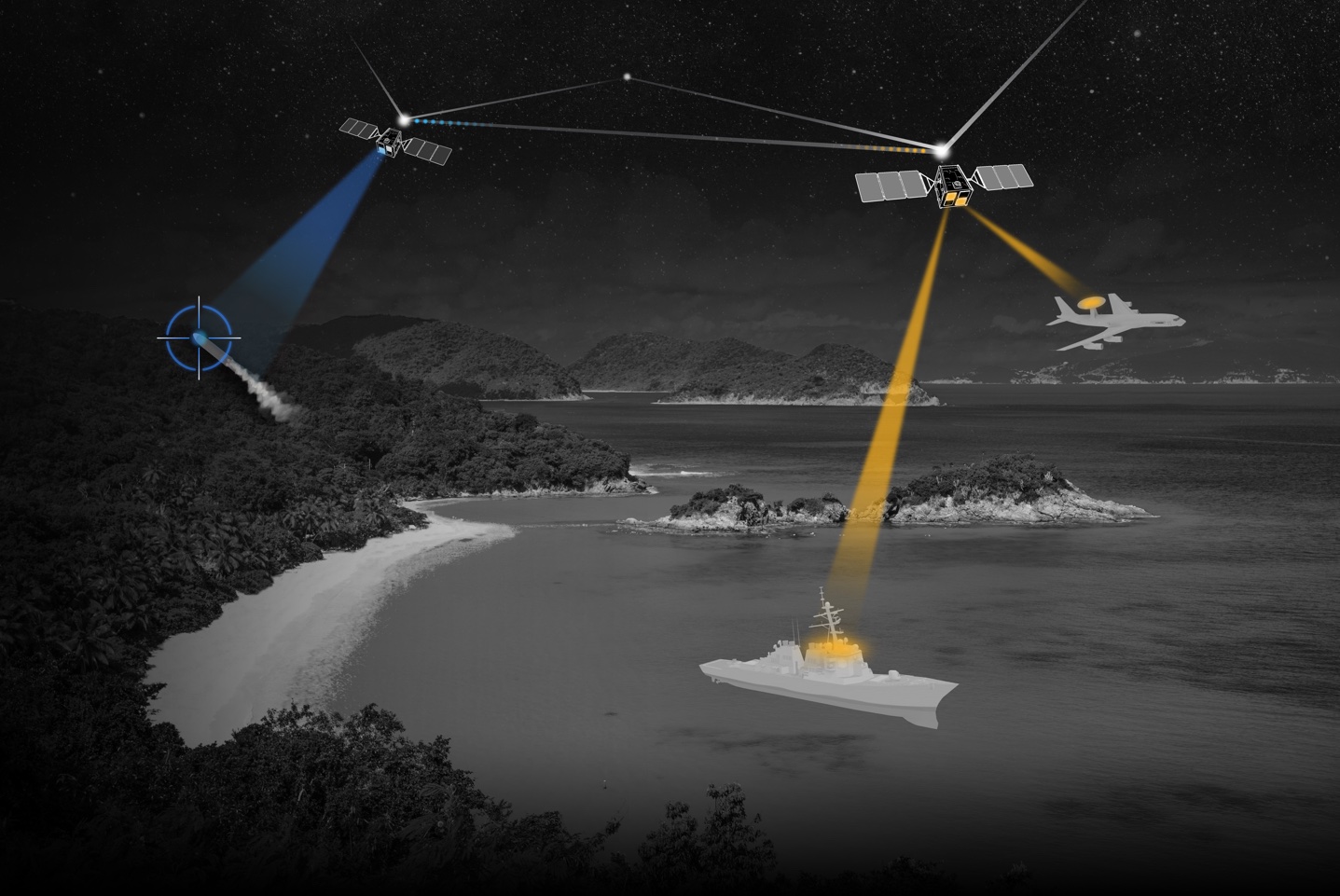WASHINGTON — CesiumAstro, a company that specializes in communications technologies for satellites and aircraft, will supply electronic phased-array payloads for seven U.S. military satellites built by Raytheon Technologies.
Raytheon is producing missile-detection sensor satellites for a low Earth orbit constellation that’s being acquired by the U.S. Space Force’s Space Development Agency.
CesiumAstro, based in Austin, Texas, announced May 4 it will provide Ka-band radio-frequency payloads to be integrated in the seven satellites that will be part of SDA’s Tracking Layer Tranche 1.
The Tracking Layer will be connected via optical links in space with a Transport Layer mesh communications network.
SDA earlier this year awarded Raytheon a $250 million contract for the seven satellites, to be delivered in 2025.
CesiumAstro’s founder and CEO Shey Sabripour told SpaceNews the agreement with Raytheon marks a major milestone for the company as it validates its approach to commoditizing phased array technologies that traditionally have been highly customized and costly.
Antenna design ‘not bespoke’
Sabripour founded CesiumAstro in 2017 after a three-decade career at Lockheed Martin and Firefly Aerospace. The venture-funded startup has about 140 employees and to date has raised more than $90 million.
For SDA’s satellites, the company will provide the Vireo active electronically scanned array (AESA) RF communications payload, developed for commercial and defense applications.
The multi-beam communications antenna, because it’s electronically steered, would allow SDA to more easily allocate Ka-band satellite capacity to users around the world, Sabripour said. That’s a major upgrade from legacy, single-beam systems that are optimized for connecting to single, static ground stations.
“You want to steer the beam to where the users are,” he said.
CesiumAstro is offering its electronic phased-array payload to other defense contractors planning to compete for SDA satellite procurements, Sabripour said.
He noted that the nation’s major defense firms for decades have developed advanced phased array technologies but most products are highly customized and too expensive for commercial use.

“We have designed a system that is not bespoke,” he said. “It can cost hundreds of millions of dollars in some cases to design a custom phased array for a ship, an aircraft or a satellite. We wanted to build a software-defined system that can be scaled to different platforms and put together like Lego bricks.”
When Raytheon receives its payloads, “they will come right out of the box and they can hook it up to their satellites without having to have a team of PhDs who know how to use this,” said Sabripour.
Developing L-band antenna
CesiumAstro recently won a $5 million contract from SDA to develop an active electronically scanned array antenna that can support the military’s Link 16 tactical data network.
The Link 16 network has been used for decades by the U.S. military and allies to securely share data. The line-of-sight network was never extended into space until SDA decided to add Link 16 payloads to its Transport Layer satellites. The Air Force also plans to demonstrate Link 16 from space in an upcoming experiment.
Sabripour said the company plans to deliver a prototype antenna to SDA by summer or fall 2024. “SDA believes that active phased arrays provide the capability they need for the future,” he said.
